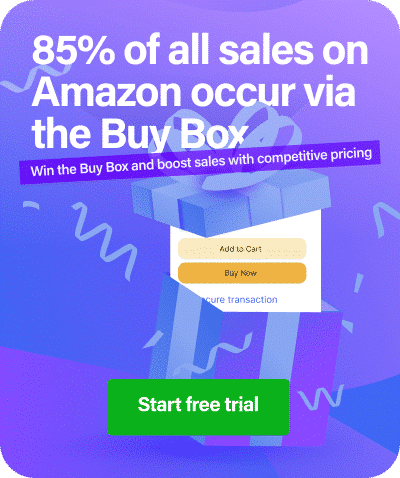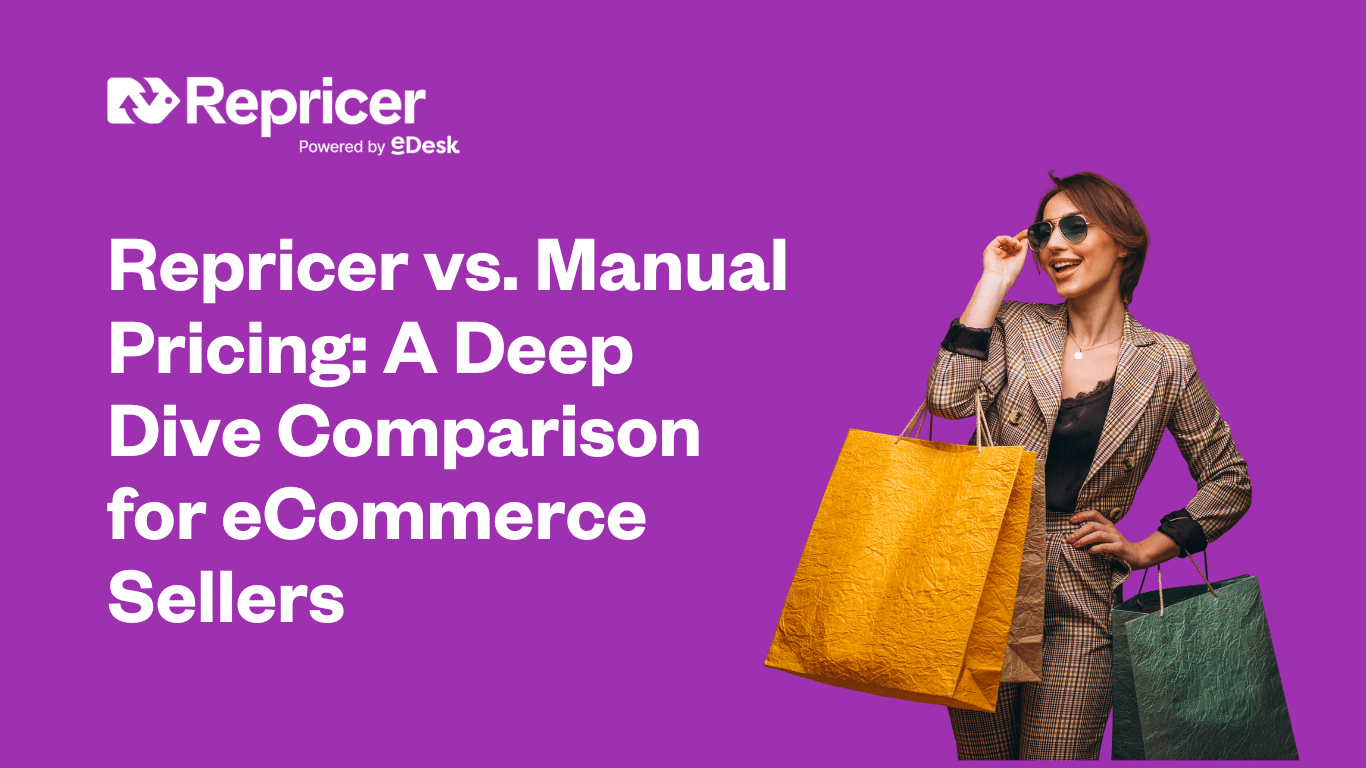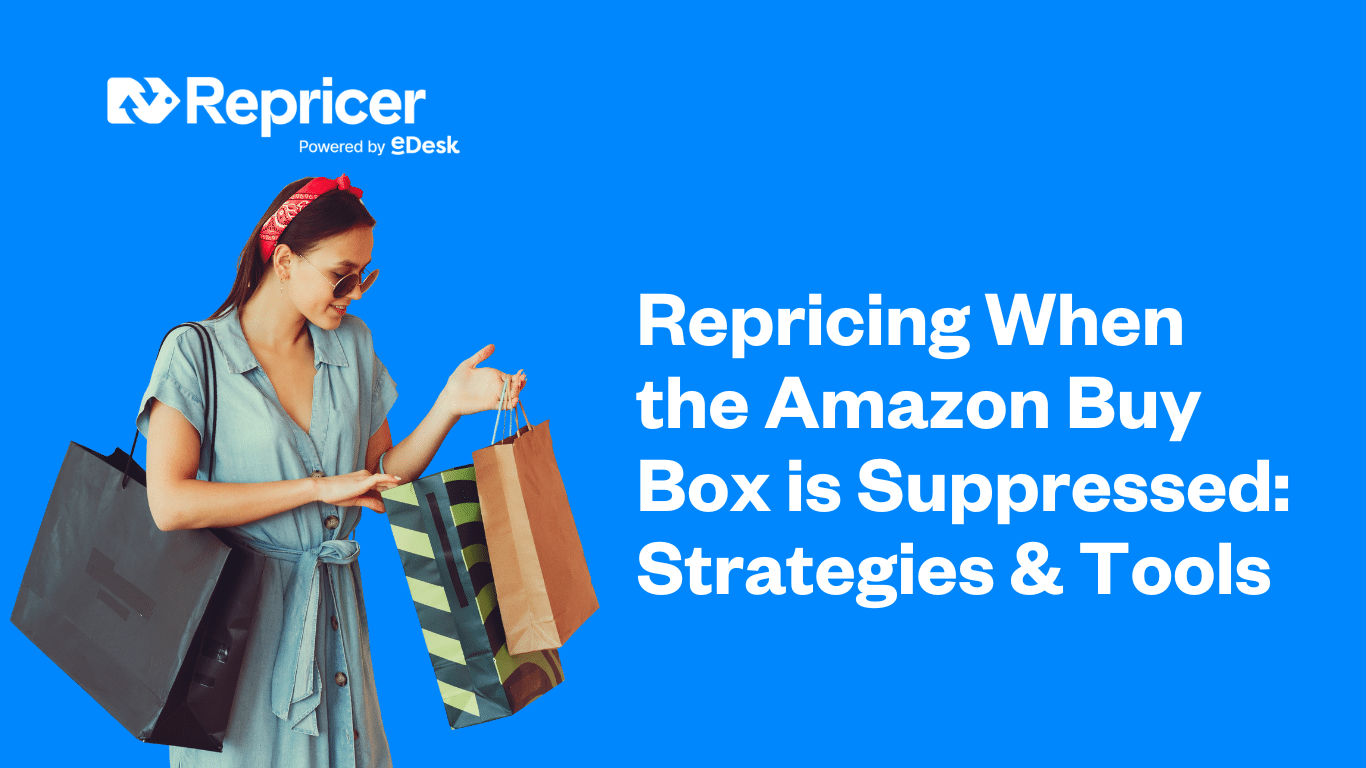A lot has happened to and with Amazon since Jeff Bezos started the business in his garage in 1994, with the first order (a book) coming the next year. Since then, Amazon’s grown to be one of the biggest, richest, and most wide-spreading companies. To help you improve as a seller, Repricer.com has the top Amazon statistics in 2025 you need to pay the most attention to.
1. Amazon Owns a HUGE Share of the US eCommerce Market
In 2024, Amazon sales represent 37.6% of all retail eCommerce sales in the US. That’s more than one-third of all online shopping in America. This share is projected to grow to 40.9% by the end of 2025, showing Amazon’s continued dominance in the digital marketplace.
To get a different idea of how staggeringly large of a share that is, the next three competitors combined don’t even come close to matching that. They’re no slouches either, with the next three on the list being Walmart (6.4%), Apple (3.6%), and eBay (3.0%).
How you can use this to your advantage: This means you’ve got access to a giant pool of online shoppers, so make good use of all that visibility with your Amazon Seller Tools.
2. Its Mobile App Is in Heavy Use, Too
While more and more people are shopping with mobile devices instead of desktop ones, not all of them are using the retailer’s app. That’s not the case with Amazon, as the Amazon Shopping app has over 150 million users in 2025. With mobile commerce in the US projected to reach $710 billion by 2025, having a strong mobile presence is crucial for success.
The Amazon app receives approximately 98 million monthly active users, with 53% of website traffic coming from mobile devices. This underscores the importance of mobile optimization for Amazon sellers.
How you can use this to your advantage: Design your product pages to be mobile-friendly so users on phones and tablets can shop with ease and security. Focus on high-quality images that display well on smaller screens and concise bullet points that are easy to read on mobile devices.
3. Amazon Users Really, Really Like Prime
Amazon Prime, the paid subscription service that offers fast shipping times and an A-to-Z guarantee, is exceptionally popular with consumers and only becoming more so. As of 2025, over 250 million people globally pay the monthly fee to be Prime members, with approximately 180 million of those in the United States alone.
Prime members are particularly valuable customers, spending an average of $1,400 per year on Amazon compared to non-Prime customers, who spend around $600 annually. Prime membership continues to grow, with subscriber numbers increasing by approximately 8% year-over-year.
How you can use this to your advantage: Make sure your products are Prime-eligible, whether that’s through Fulfilled by Amazon (FBA), Seller-Fulfilled Prime (SFP), or some other fulfillment method, so you can get that badge on your listings. Prime customers are proven to spend more and shop more frequently, so why use a repricer to ensure you stay competitive for this valuable audience?
4. Most People Price-Check on Amazon
While Amazon’s share of the US eCommerce market may be 37.6%, there are far, far more people who go on Amazon to browse prices at a minimum. How much more? About 90% of shoppers will use Amazon at some point in their purchasing process to confirm the best price.
Furthermore, 63% of customers start their product searches directly on Amazon rather than using other search engines. This makes Amazon not just a marketplace but the primary search engine for product information, comparable to Google’s dominance in general web searches.
How you can use this to your advantage: Use an Amazon repricer tool to ensure you have the most competitive prices all the time. You’d never want to lose out on a potential sale at 2am because you were asleep and couldn’t manually update prices. Winning the Amazon Buy Box depends heavily on having competitive pricing, and automating this process gives you a significant advantage.
5. The Most Popular Amazon Categories in 2025
Electronics continues to be a powerhouse category, with approximately 44% of US Amazon shoppers making purchases in this category in 2024. Clothing, Shoes & Jewelry follows closely at 43%, and Home & Kitchen rounds out the top 3 with 39%.
However, competition varies greatly across categories. For instance, categories like toys and beauty products have seen significant growth in 2025, with beauty products now having a market share of 34.5% on Amazon, making them increasingly profitable niches for sellers.
How you can use this to your advantage: If you have a high sales volume and rely on numbers instead of percentages for your profit margins, popular categories could be a fit. If not, leave the cutthroat competitiveness to other sellers and focus on growing niches where competition is less intense but demand is rising.
6. Don’t Put All Your Eggs in One Basket
While Amazon is one of the easiest platforms to sell on in terms of ease of use, visibility, traffic, and available resources, there are plenty of other platforms, too. This helps spread out your inventory in case it takes a hit in one area and needs to rely on the others to compensate.
Statistics show that approximately 80% of Amazon sellers use additional platforms to expand their reach, driven by heightened competition and the rise of private-label brands. Diversification helps sellers secure steady income and reduces reliance on a single marketplace.
How you can use this to your advantage: Look into omnichannel selling if it works for you so you can absorb losses by compensating with gains in other markets. Plus, you’ll also be able to see which platforms work best for you individually, and that may not include Amazon. Building a diversified sales strategy is a key way to grow your Amazon business sustainably.
7. Not Every Amazon Seller is a Native Seller
More than 60% of Amazon’s sales come from third-party sellers, which is music to the ears of small and medium businesses. Amazon is an excellent platform to list their products on and take advantage of everything appealing about Amazon to its users.
In fact, there are approximately 9.7 million sellers on Amazon globally, with about 2 million actively selling on the platform. Each year, about 1 million new sellers join the marketplace. With 86% of sellers using FBA, it’s clear that Amazon’s fulfillment service is a major draw for independent businesses.
How you can use this to your advantage: With more and more third-party sellers, the number of counterfeit and hijacked listings goes up. Check if brand registry is an appropriate solution to help protect you from unscrupulous sellers. Also, make sure to leverage Amazon’s FBA program, as it’s been shown to increase sales by 20-25% compared to non-FBA sellers.
Reprice on Amazon with Repricer.com
No matter which Amazon statistic for the rest of 2025 mattered most for you, there’s always one area that every single Amazon seller needs to think about: competitive repricing. With Repricer.com in hand, that becomes super easy. The data-driven approach helps you set pricing rules that work for you so you don’t have to bother with manual repricing. But if you’re not using it, sign up right now, and we’ll start you with a free trial.





